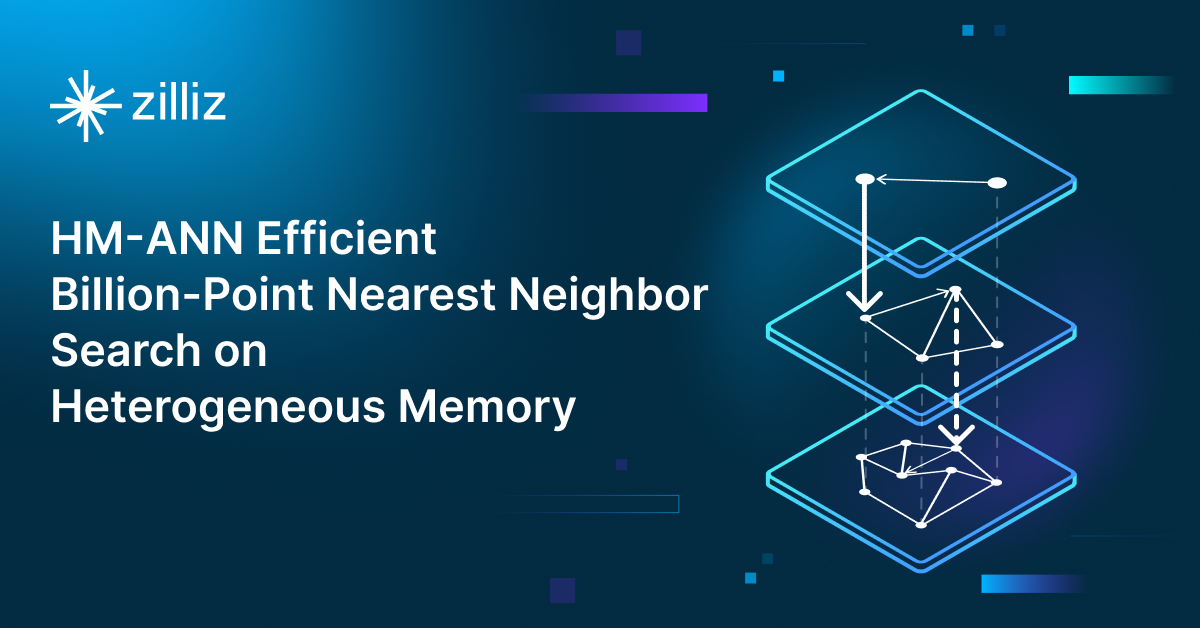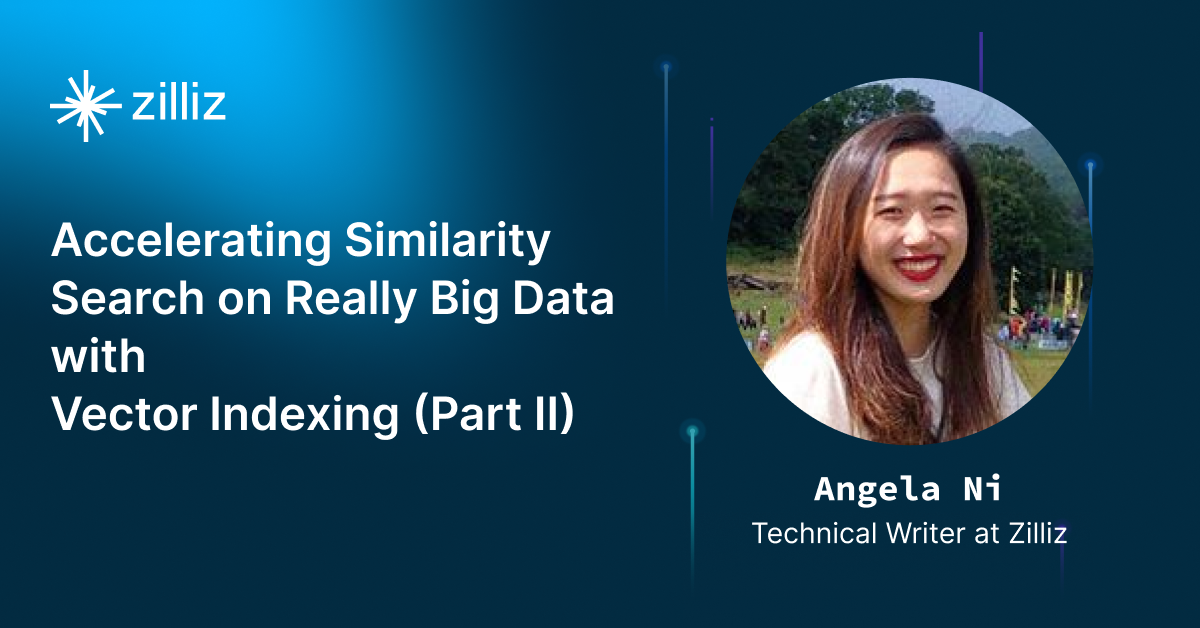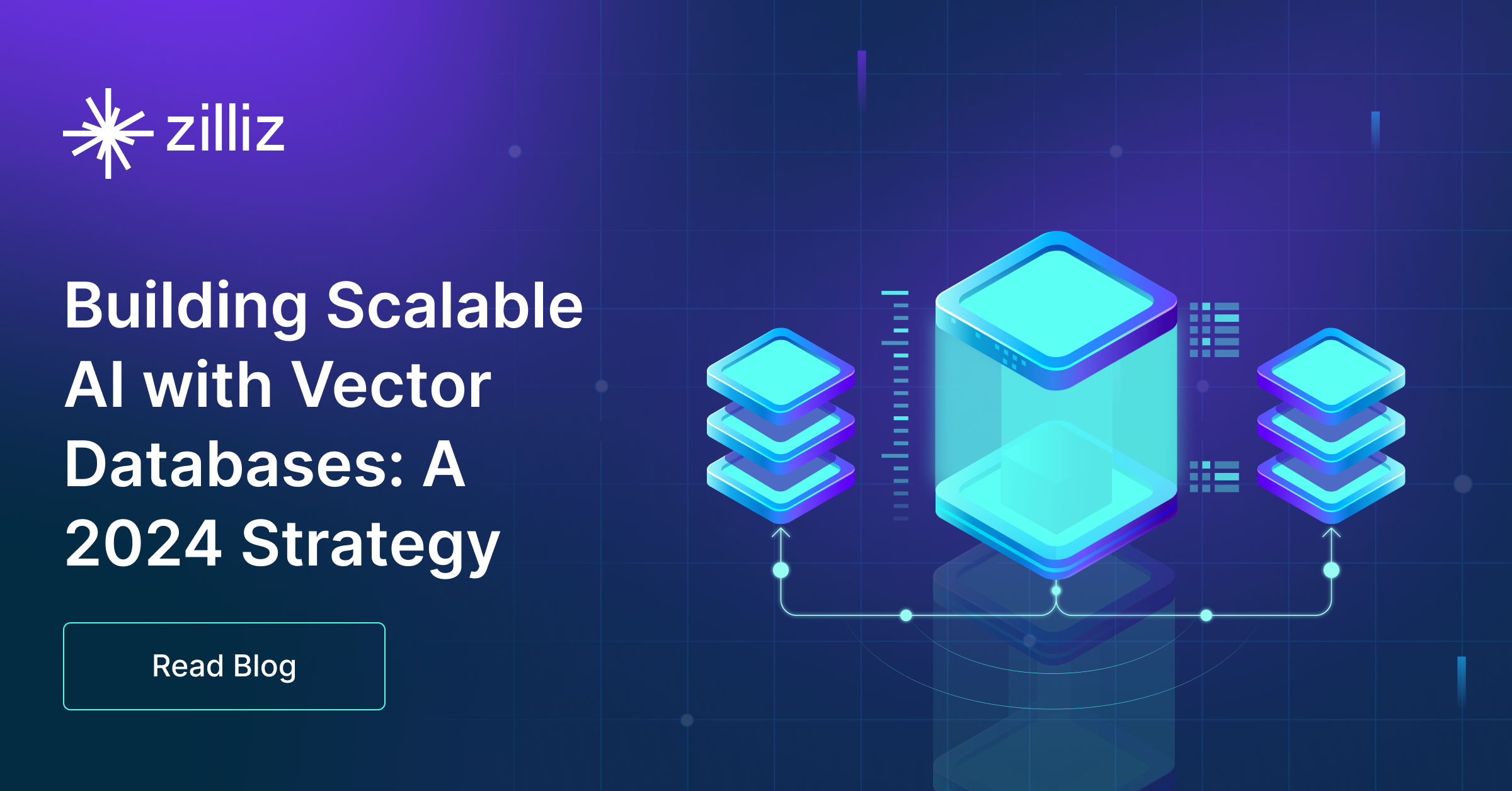The Role of Vector Databases in Predictive Analytics
Explore how vector databases enhance Predictive Models and their applications.
Read the entire series
- Image-based Trademark Similarity Search System: A Smarter Solution to IP Protection
- HM-ANN Efficient Billion-Point Nearest Neighbor Search on Heterogeneous Memory
- How to Make Your Wardrobe Sustainable with Vector Similarity Search
- Proximity Graph-based Approximate Nearest Neighbor Search
- How to Make Online Shopping More Intelligent with Image Similarity Search?
- An Intelligent Similarity Search System for Graphical Designers
- How to Best Fit Filtering into Vector Similarity Search?
- Building an Intelligent Video Deduplication System Powered by Vector Similarity Search
- Powering Semantic Similarity Search in Computer Vision with State of the Art Embeddings
- Supercharged Semantic Similarity Search in Production
- Accelerating Similarity Search on Really Big Data with Vector Indexing (Part II)
- Understanding Neural Network Embeddings
- Making Machine Learning More Accessible for Application Developers
- Building Interactive AI Chatbots with Vector Databases
- The 2024 Playbook: Top Use Cases for Vector Search
- Leveraging Vector Databases for Enhanced Competitive Intelligence
- Revolutionizing IoT Analytics and Device Data with Vector Databases
- Everything You Need to Know About Recommendation Systems and Using Them with Vector Database Technology
- Building Scalable AI with Vector Databases: A 2024 Strategy
- Enhancing App Functionality: Optimizing Search with Vector Databases
- Applying Vector Databases in Finance for Risk and Fraud Analysis
- Enhancing Customer Experience with Vector Databases: A Strategic Approach
- Transforming PDFs into Insights: Vectorizing and Ingesting with Zilliz Cloud Pipelines
- Safeguarding Data: Security and Privacy in Vector Database Systems
- Integrating Vector Databases with Existing IT Infrastructure
- Transforming Healthcare: The Role of Vector Databases in Patient Care
- Creating Personalized User Experiences through Vector Databases
- The Role of Vector Databases in Predictive Analytics
- Unlocking Content Discovery Potential with Vector Databases
- Leveraging Vector Databases for Next-Level E-Commerce Personalization
- Mastering Text Similarity Search with Vectors in Zilliz Cloud
- Enhancing Customer Experience with Vector Databases: A Strategic Approach
Introduction
In the era of AI-first companies, predictive analytics has become a crucial tool for organizations seeking a competitive edge. As enterprises embrace AI to uncover patterns, provide context, and automate processes, the need for efficient and accurate data analysis has never been greater. At the forefront of this transformation are vector databases, which have emerged as game-changers in handling complex, high-dimensional data.
Vector databases are designed to store and process data in vector form, making them particularly well-suited for AI applications. By enabling lightning-fast similarity searches, vector databases allow organizations to extract valuable insights from massive datasets with unprecedented speed and accuracy. This is especially important in building an "AI factory," where the ability to industrialize decision-making processes across organizations is critical.
One of the key advantages of vector databases in predictive analytics is their ability to enhance the development and refinement of predictive models. With the capacity to rapidly process large datasets and support complex algorithms, vector databases empower data scientists and analysts to build more sophisticated and accurate models. Features such as similarity search enable dynamic predictive modeling, adapting to evolving patterns and trends in real-time.
The applications of vector databases in predictive analytics span across various industries. In healthcare and life sciences, where unstructured data is abundant, vector databases can help organizations gain insights that lead to new approaches in patient care. In financial services, vector databases power advanced fraud detection systems and risk assessment models, helping institutions avoid potential threats.
As AI-first companies embrace the concept of an "AI factory," the role of vector databases in predictive analytics becomes even more critical. Organizations can set a new benchmark for efficiency, collaboration, and strategic insight in the digital age by prioritizing temporal analysis and systems-level integration of AI. The ability to uncover knowledge from various data types, including text, video, audio, and images, enhances the capacity for AI-first companies to refine and target data searches for better relevancy.
Understanding Vector Databases
Vector databases are purpose-built databases designed to store and process data as vector embeddings; unlike traditional databases that bolt on vector search indexes, vector databases are built to handle vector embeddings as first-class citizens with their ability to handle similarity searches and nearest-neighbor queries efficiently. This unique approach to data storage and retrieval makes vector databases particularly well-suited for machine learning and AI applications. By organizing data points in a high-dimensional space, vector databases can quickly identify similar or related data points based on their proximity in the vector space. This enables lightning-fast retrieval of relevant information, even from massive datasets, making vector databases essential for real-time analytics and data-driven decision-making.
In the context of predictive analytics, vector databases offer several significant advantages. First, they greatly improve data retrieval speed, allowing organizations to process and analyze vast amounts of data in near real-time. This is particularly crucial when timely insights, such as fraud detection or market trend analysis, are essential. Second, vector databases play a role in enhancing the accuracy of data modeling. By enabling more precise similarity comparisons and pattern recognition, they allow predictive models to capture complex relationships and dependencies within the data, leading to more accurate predictions and insights.
Moreover, vector databases are highly scalable and can handle the ever-growing volume and complexity of data generated by modern organizations. As businesses collect more unstructured and semi-structured data from various sources, such as social media, sensors, and customer interactions, vector databases provide a flexible and efficient way to store and analyze this information. By seamlessly integrating with existing data pipelines and analytics workflows, vector databases reassure organizations that they can harness the full potential of their data assets and drive innovation through data-driven insights, no matter how much their data needs grow.
Enhancing Predictive Models with Vector Databases
Vector databases play a crucial role in enhancing the development and refinement of predictive models. By facilitating the rapid processing of large datasets and supporting complex algorithms, vector databases enable data scientists and analysts to build more accurate and dynamic predictive models.
One of the key ways vector databases contribute to predictive modeling is through their ability to handle high-dimensional data efficiently. In many predictive analytics scenarios, such as customer segmentation or recommendation systems, data points are represented as high-dimensional vectors that capture various attributes or features. Vector databases are specifically designed to store and process these high-dimensional vectors, allowing for fast similarity searches and nearest neighbor queries. This enables data scientists to quickly identify patterns, clusters, and relationships within the data, which is essential for building accurate predictive models.
Moreover, vector databases support complex algorithms and machine learning techniques that are commonly used in predictive modeling. For example, vector databases can efficiently handle techniques such as k-nearest neighbors (k-NN), which is used for classification and regression tasks. By leveraging the similarity search capabilities of vector databases, k-NN algorithms can quickly identify the most relevant data points for a given query, improving the accuracy and performance of the predictive model.
Another critical feature of vector databases that enhances predictive modeling is their ability to enable real-time analytics. In many industries, such as finance or e-commerce, the ability to make predictions and decisions in real time is crucial. Vector databases allow for near-instantaneous retrieval of relevant data points, enabling predictive models to generate insights and recommendations on-the-fly. This real-time capability is particularly valuable for dynamic predictive modeling, where models need to adapt and update based on streaming data or changing conditions.
Furthermore, vector databases support incremental learning and model updates. As new data becomes available, vector databases can efficiently incorporate this information into existing models without requiring a complete rebuild. This allows predictive models to continuously learn and improve over time, adapting to evolving patterns and trends in the data. By facilitating incremental learning, vector databases enable organizations to maintain accurate and up-to-date predictive models, even in the face of rapidly changing data landscapes.
The similarity search capabilities of vector databases are also crucial for predictive modeling. By identifying similar data points or clusters, predictive models can uncover hidden patterns and relationships that may not be apparent through traditional data analysis techniques. This is particularly valuable in domains such as anomaly or fraud detection, where identifying rare or unusual patterns is critical. Vector databases enable predictive models to quickly identify similar instances and flag potential anomalies or fraudulent activities, improving the accuracy and effectiveness of the models.
Applications in Predictive Analytics
Vector databases have found wide-ranging applications in predictive analytics across various industries, including healthcare, manufacturing, and financial services. By leveraging the power of vector databases, organizations can unlock valuable insights, automate processes, and make data-driven decisions that drive business success.
In the healthcare industry, vector databases are being used to assist busy front-line staff by transcribing and summarizing medical notes, allowing healthcare professionals to focus on patient care rather than administrative tasks. Chatbots powered by vector databases can answer medical questions and provide personalized recommendations to patients, improving access to healthcare information. Predictive analytics enabled by vector databases can inform diagnosis and treatments, helping healthcare providers make more accurate and timely decisions based on patient data.
Manufacturing companies are leveraging vector databases to create expert copilots for technicians, providing conversational interactions with machines and enabling natural language troubleshooting. Vector databases can help in prescriptive and proactive field service, ensuring that maintenance and repairs are performed efficiently and effectively. By analyzing warranty status and documentation using vector databases, manufacturers can identify and proactively address potential issues. Vector databases also enable manufacturers to understand process bottlenecks and devise recovery strategies, optimizing production lines and reducing downtime.
In financial services, vector databases uncover trading signals and alert traders to vulnerable positions, helping them make informed decisions in fast-paced markets. Vector databases can accelerate underwriting decisions by quickly analyzing vast amounts of financial data and identifying patterns and risks. Legacy systems can be optimized and rebuilt using vector databases, improving efficiency and reducing maintenance costs. Vector databases also enable reverse-engineering of banking and insurance models, providing insights into complex financial products and services.
Financial institutions use vector databases to monitor for potential financial crimes and fraud, leveraging the similarity search capabilities to identify suspicious transactions or behavior patterns. Vector databases can automate data gathering for regulatory compliance, ensuring financial organizations meet legal and regulatory requirements efficiently. Financial analysts can make more informed investment decisions and identify potential risks and opportunities by extracting insights from corporate disclosures using vector databases.
These are just a few examples of how vector databases are applied in predictive analytics across different industries. As organizations continue to generate and collect vast amounts of data, the importance of vector databases in enabling real-time analytics, pattern recognition, and data-driven decision-making will only grow. By embracing vector databases as a core component of their predictive analytics strategies, organizations can gain a competitive edge and drive innovation in their respective fields.
Conclusion
In conclusion, vector databases are poised to play an increasing role in shaping the predictive analytics landscape. By unlocking deeper insights, driving data-driven strategies, and fostering innovation, vector databases empower organizations to stay ahead of the curve and gain a competitive edge. For those seeking to elevate their predictive analytics practices and thrive in the era of AI-first, embracing vector databases is not just a smart move – it's a strategic imperative.
- Introduction
- Understanding Vector Databases
- Enhancing Predictive Models with Vector Databases
- Applications in Predictive Analytics
- Conclusion
Content
Start Free, Scale Easily
Try the fully-managed vector database built for your GenAI applications.
Try Zilliz Cloud for FreeKeep Reading

HM-ANN Efficient Billion-Point Nearest Neighbor Search on Heterogeneous Memory
An introduction to a novel HM-ANN algorithm for graph-based similarity search, which offers distinct advantages over existing ANN search solutions.

Accelerating Similarity Search on Really Big Data with Vector Indexing (Part II)
Discover how indexes dramatically accelerate vector similarity search, different types of indexes, and how to choose the right index for your next AI application.

Building Scalable AI with Vector Databases: A 2024 Strategy
Vector databases are pivotal for scalable AI applications in today's digital landscape.
